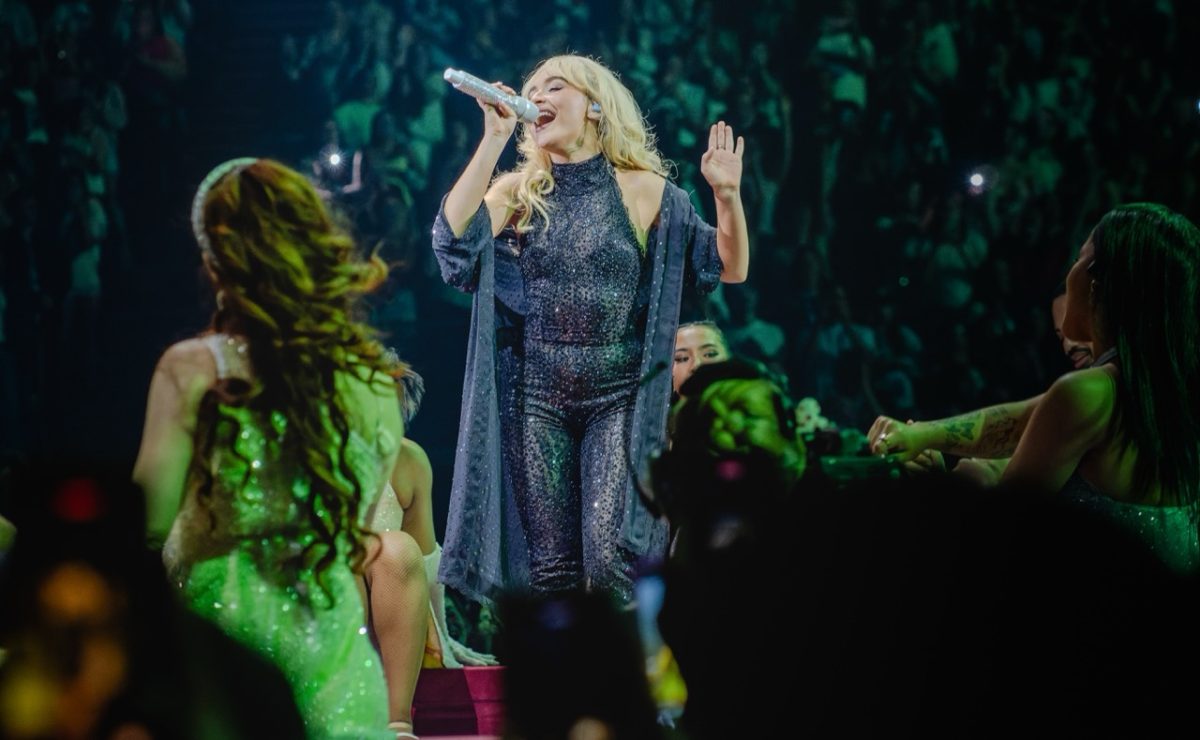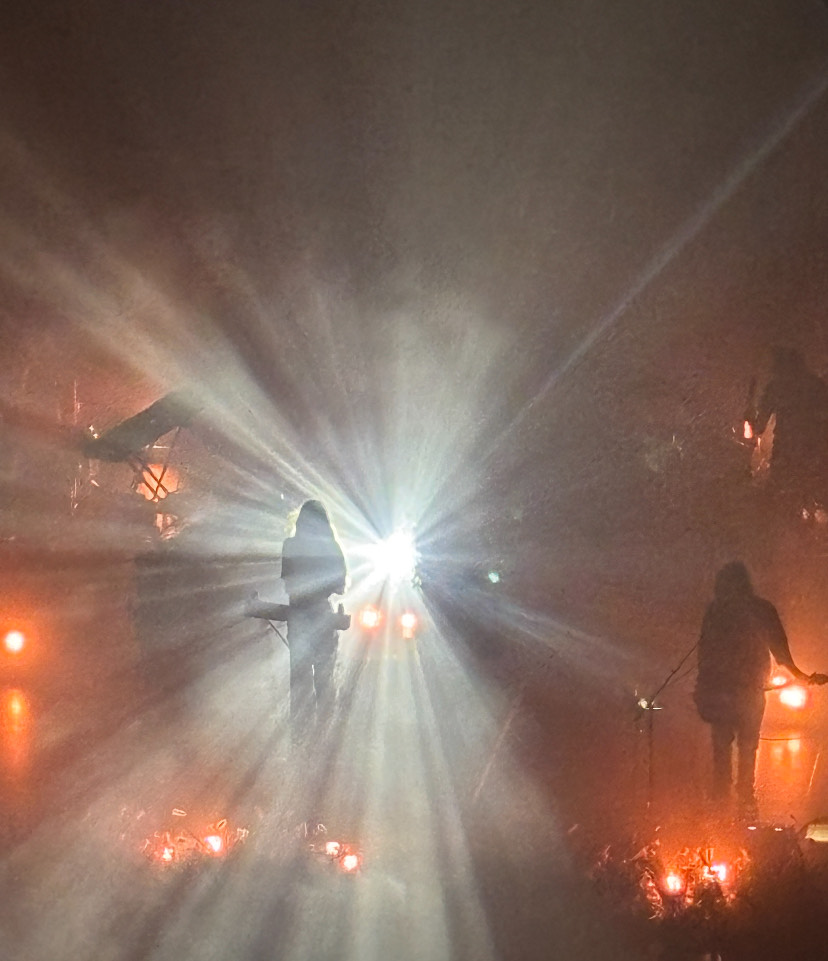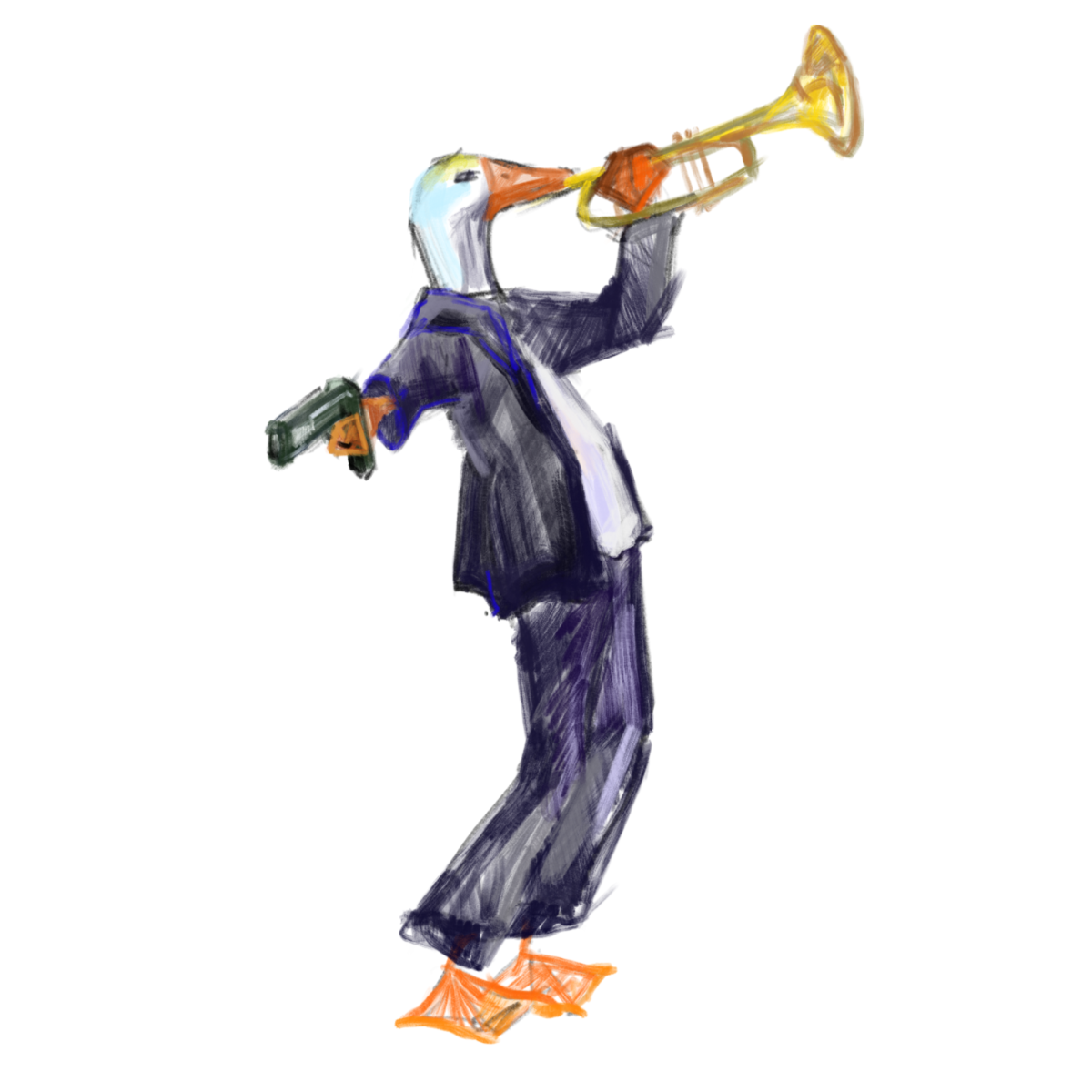It’s a Sunday afternoon, and dancers are lying on the studio floor in the Leonard Center. There’s some laughing and a few stories exchanged about Saturday night, and a lot of ankle cracking. When Brian Evans — a dance department faculty member and the choreographer of the piece the dancers are working on — joins in, everyone circles up and checks in. It’s the end of the weekend, so the dancers are often feeling a little stressed and worn down. But when warm-ups get going, it’s impossible for energy levels to remain low. Evan’s piece involves apples, so there’s a lot of tossing, jumping with and exchanging of the fruit, all a part of the process to get the dancers comfortable with one another and with their own bodies. The piece is about how to express individuality in a constrictive society, a theme that’s expressed by its title, “Fire Underwater:” flames struggling to gleam beneath the pressure of the heavy ocean. It is made up of several parts: a spoken word poem, written collectively by eight of the nine dancers; a monologue by the ninth dancer, accompanied by gradually intensifying movement; and finally a catharsis, where the dancers try to come to peace with themselves and with one another.
I auditioned for the dance concert this fall, after three years of being a little too dubious of my own abilities to gather the courage. But being in Brian’s piece this fall has been a striking and wonderful experience. The rehearsal process — from slowly learning to devour apples, to ending each practice with a phrase signed to one another in ASL — has been an experience both enjoyable and challenging. The enjoyment comes from learning to work with a fantastic and variable group of dancers, all passionate about movement in unique ways. The challenge comes in the details, such as when dancers must coordinate small movements with a partner who is across the stage, or moments of intensity that can fall flat. The enthusiasm and commitment of the dancers and choreographers is apparent, and their work is deserving of recognition.
The name of the fall 2016 dance concert is Bodies in the Balance, a theme that many of the dance pieces connect to, some more tangibly than others. In senior Peace Madimutsa’s piece, there are literally large tipping steel-frame boxes that the dancers balance against, moving fluidly in and out of each box’s confines. Senior Catriona Leckie’s piece opens with two dancers in white slumping against one another in silence, struggling to keep the other supported. Several of the student-choreographed pieces stand out for their poignancy, energy and innovation. The pieces by Claire Grace ’19 and Catriona Leckie ’17, as well as junior Sophia Hill’s collaboration with Yuri Smith ’18 are particularly striking.
The most powerful pieces of the concert are those dedicated to exploring race and freedom, and the imprisonment of black bodies. Many of these pieces are rightfully intense and disturbing: Faculty member Sister Patricia Brown’s piece, “Stimela,” is a powerful narrative about labor exploitation, visualized through theatrical violence. Sophomore Nteranya Arnold Sanginga’s piece, “Caged Freequency,” highlights one dancer, Allegra Wyatt ’18, surrounded by other dancers with brightly colored scarves that restrict her movement.
There are two solo pieces dedicated to recent police shootings of black individuals, one by Sophia Hill ’18 and one by Niara Williams ’18. They are both extremely powerful, but in different ways. In Sophia’s piece, the soloist Yuri Smith ’18 stretches her body intently as city noises play around her. Her entire body is taut, down to the lines of her flexed toes. Her slow strain is agonizing to watch, contrasting the simple soundtrack and demonstrating the ways in which people of color experience the burdens of violence in everyday life. For her solo, Williams wears a long blue gingham skirt, that contrasts with the harsh, modern beats of the music she dances to. Both pieces are a powerful look at the emotional labor of women of color.
The more traditional balletic dance pieces seem almost out of place in this concert full of intense themes. Faculty member Jill Lile’s piece is choreographed to J.S. Bach, and juniors Maya Swope and Karin Davey’s piece is choreographed to a Florence and the Machine song. These pieces, rooted more in ballet than in modern or hip-hop styles, are visually striking in their clean lines and elegance. The long, silvery gray costumes in Karin and Maya’s piece are complemented by blue lighting, illuminating the beauty of the long lines created by the dancers’ limbs. Jill Lile’s piece is in the style of a courtly dance, with dancers weaving in and out of one another with neat precision. A third piece called “like a stone,” one that defies categorization, is choreographed by faculty member Krista Langberg, and its movements are seemingly simple, not rooted in classical ballet or hip-hop, but a reflection of everyday motion. The beauty of the piece comes in the rhythms of the five dancers, and how each dancer engages with a separate rhythm to create similar motion. It’s a gorgeous exploration of individuality and collaboration.
Bodies in the Balance is a disturbing, haunting and beautiful concert. Its dancers come from many backgrounds with different levels of training, but from my experience, it is easy to see that the artists are all equally passionate and talented. Each piece is different, but comes together in a cohesive exploration of balance. I encourage Macalester students to attend, not only to support the hard work of our peers, but to explore and visualize many of the issues facing us today.







Austin Churchill • Sep 12, 2019 at 3:30 am
I rattling happy to find this site on bing, just what I was searching for : D as well saved to bookmarks.
Jennifer Welch • Sep 10, 2019 at 8:48 pm
Good – I should certainly say I’m impressed with your web site. I had no trouble navigating through all tabs as well as related info. The site ended up being truly simple to access. Great job…
Megan Walker • Sep 6, 2019 at 12:03 am
Just what I was looking for, thanks for putting up.